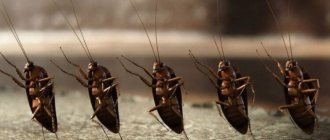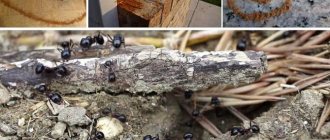There are many ways to fight moles. Some of them are designed only for catching animals, others - for their immediate destruction, and others - for the fact that moles will leave the area themselves due to unfavorable conditions for them. We will tell you about the most effective ones.
The mole is an undeservedly offended creature. All sins are attributed to him that he did not commit. Root vegetables in the garden are gnawed - the mole is to blame! The roots of plants are gnawed - the work of a mole's hands (teeth)! The whole earth is up in arms - the mole has done a mischief again! But in reality, there is more than one mole operating in our gardens - there are several underground pest animals. And often it is they, and not the mole, who ruin our lives.
Who is causing us trouble and causing material damage? To understand this, you need to carefully study the traces of the crime. They will tell you who exactly came into our possessions.
What is the difference between a mole, a mole rat and a water vole?
At the summer cottage, three animals are engaged in underground dirty tricks: a mole, a mole rat and a water vole.
The water vole is better known as the water rat or ground rat. Although this is actually not a rat, but an animal of the hamster family, due to its external similarity it is called a rat in everyday use. Often in the fall, during the preparation of supplies for the winter, this animal ends up in our gardens. That's when she begins to engage in sabotage. Chewed roots, tubers or plant bulbs are a matter of her teeth. If you notice that someone has gnawed the bark of seedlings or damaged the roots of trees, look for an earth rat in your possessions. Here and there mounds of earth appeared from underground passages - and here an earth rat could work.
Let's move on to the mole rat. The common mole rat is an animal from the order of rodents. It leads, like a mole, an underground lifestyle and, like a mole, it has undeveloped eyes (hence the name of the animal). This is where the main similarities between the mole rat and the mole end.
The mole rat is a herbivorous animal. He happily eats plant roots, tubers and bulbs. It also loves above-ground parts: stems and leaves. Its feeding passages are located deeper than those of the mole - at a depth of 20-25 cm, while for the mole it is only 2-5 cm from the surface of the earth.
In addition (and this is the main difference between the mole and the listed animals), the mole does not feed on vegetation, because he is an insectivore. Its main food is earthworms, so blaming the mole for the gnawed crop is wrong. He is guilty only of spoiling the appearance of the lawn or area, and of touching the roots of plants while making moves. In other cases, you need to look for other culprits.
Other unpleasant odors
A good folk remedy for expelling moles using plants is elderberry and gooseberry. But it is not their planting that will help, but the vegetative parts that are cut up and thrown into a hole - then the animals are irritated by the smell and they leave their home.
Moles also cannot tolerate some essential oils . This method is more of a prevention and does not claim to be the most effective. Apply undiluted essential oil of mint or eucalyptus to cotton balls and place them along the passages and burrows.
There is an opinion among gardeners and gardeners that moles cannot tolerate coffee grounds. So the coffee can be collected and poured into the mountains.
Another method that is used for preventive purposes is spoiled food . These are rotten fish or eggs that are thrown into the water. It’s unpleasant for both people and the mole.
Plastic bottles from Andrey Berezin
Andrey Berezin used the most famous method of fighting moles - a homemade “noise maker”. To make it, take any plastic bottle and cut 3-5 windows on its side surface. Bend all windows to one side. Now all that remains is to attach the noise repeller.
To do this, take a metal rod, and in the bottom of the bottle make a hole with a slightly larger diameter than the diameter of the rod (due to this size, the bottle will not be statically fixed, but will be able to “dangle” freely on the pole, which will create additional sounds). Fix the container on the rod and stick it into the moles' habitat. To be safe, make several of these pinwheels and place them every 10-15 m throughout the area.
The wind will create noise, the metal pin will transmit it to the ground. Moles don’t like such a noisy life, so they go to quieter neighbors. As soon as new individuals appear, repeat the procedure.
You can also use this version of the “noise maker”, as in the photo. In this case, the noise is created by rotating blades that are loosely attached to the neck of the bottle.
Marigold
Many gardeners grow unpretentious marigolds in the country and do not think about the fact that the strong aroma of flowers brings practical benefits. It is this that repels moles, shrews, mole crickets and other pests. Therefore, plants should be planted around the perimeter of the site or as often as possible.
Another method of using them will require collecting all the marigolds from the flower beds in the fall, drying them and crushing them. When digging, such dust is introduced into the soil of greenhouses and other necessary places.
Using used cat litter to fight moles from Evgeniy Klyuev
In war, all means are good. Evgeniy Klyuev, for example, uses used cat litter (a good owner, as you know, never wastes anything, even used cat litter).
In a bucket of water, dilute 1 lump of litter with cat waste. Fill the mole holes with the resulting solution, and then cover them with earth. Take a piece of reinforcement and use it to make many holes in the ground near the molehills. The animals will then move to a safe distance and stay away from your area.
How to get rid of a mole in your dacha forever?
Now let's look at more drastic methods of how to remove the pest from a summer cottage.
Poison bait for moles
Poisonous baits (mostly in the form of granules or powder) are very tasty for moles. Poison baits are placed in underground corridors to lure animals.
Traps, mole traps
There are several models of mole traps designed to catch moles, rats, and voles. A hole is opened at a distance of 20 cm and a trap is set. Placement of the trap should be done carefully so that the channel is clean and not contaminated. The clamp is secured with a fixing plate. The trap is covered with turf. Place an opaque bucket upside down on top. The edges of the bucket are sprinkled with soil.
Attention! All operations must be performed with gloves so that the animal does not smell human odor.
Smoke
You can also blow sulfuric acrid smoke into the tunnels, smoke that releases repellent or poisonous gas. For smoke to be effective, it must be used simultaneously in all inhabited burrows. These drugs also work on voles and other rodents.
The mixtures are prepared on the basis of potassium nitrate mixed with powdered sugar. The more sugar, the more smoke.
Be careful! Such mixtures burn intensely, spark, and burning pieces of the composition can fly off, causing burns. Take care of your eyes and skin; you need to set fire to the mixture from a distance.
There are many methods and ideas on how to get rid of moles in the garden. Different methods will be useful in different conditions. The Mole is not an easy opponent and stubbornly returns to its tunnels. When fighting it, you need to remain patient and repeat the procedures regularly. It is better to act differently and try different methods to get rid of the underground tenant of the vegetable garden and garden.
When choosing a method, you should take into account the safety of the inhabitants of the dacha, including pets. Some types of poisons can be eaten by chickens, cats and other pets. Particular attention should be paid to the possibility of children having access to poisons, explosives, traps and snares.
Ruthless fight against underground pests from Alexander Lisichkin
krot911.ru
Our reader Alexander Lisichkin decided to throw all his resources into fighting moles. First, he suggests using noise repellers made from plastic bottles on poles. For greater efficiency, place dog excrement in the holes at the same time. If these methods are unsuccessful, then you will have to move on to traps.
There are 2 types of traps:
- Traps that kill animals.
- Live traps - in this case the mole will live. However, you need to free him from the trap in time, because moles can survive without food for only 14 hours.
Alexander Lisichkin proposes creating a live trap. For it, take a plastic sewer pipe with a diameter of 50 mm. To make a trap, cut about half a meter of such pipe.
Now the entrances at both ends of the pipe need to be closed with doors. The doors can be made from the bottom and top of any tin can that is suitable in size. The height of the door should be approximately 5-6 mm larger than the hole, and the width, on the contrary, should be smaller.
Drill holes at the top, above the entrances, and secure the doors there with wire. Install the doors at a slight angle into the pipe. Thanks to this trick, the mole will easily enter the trap, but will not be able to get out of there: the door is larger than the hole, and the animal will not have the strength to “open” it to the outside.
Dig up the mole passage and set a trap in the tunnel. The mole, walking through his labyrinths, should not suspect anything. Then he will calmly enter the pipe, but he will not be able to get out.
Cypress spurge
The perennial herbaceous plant is considered an excellent repellent against moles. It should be planted around the perimeter of the site and then it will not interfere with the harvest and will enhance protection against rodents. It is important to take into account that milkweed fruits contain toxins, and children and pets should be protected from such a plant.
The height of cypress milkweed reaches 30 cm. This makes it a useful garden decoration. Lush bushes of rich green color have up to 12 peduncles.
Ruthless mole hunting from Nikolai
Nikolai suggests immediately starting to fight moles tooth and nail. And he suggests starting with traps. Dig up several mole tunnels and set traps in them. After that, cover everything with soil again.
If you find a passage that goes at an angle into the depths of the earth, Nikolai suggests filling it. Pour in kerosene. Thanks to its very strong and unpleasant smell, it will force moles to leave their homes and go for permanent residence to another area.
In addition to the above, many of our readers who have freed their territories from moles recommend getting a rat-catcher cat or hunting dogs: dachshund, spaniel, terrier, etc. These animals will forever relieve you of the worries of fighting moles and other pests.
Have you ever had to fight moles on your property? And who won?
Flowers are a beautiful way to fight moles
In addition, some types of decorative flowers are classified as repellers - for example, the classic daffodil. The slightly less well-known Siberian woodleaf (Scilla siberica) also has a deterrent effect: over time, it spreads throughout the area, and you yourself can regulate its spread. This also includes a plant called imperial hazel grouse (Fritillaria imperialis) from the lily family: there is an opinion that the smell of its bulbs resembles the smell of a fox, and the association with this predator scares away moles.
But not only bulbous flowers can serve well in the fight against pests. Beloved by gardeners and unpretentious, marigolds have a pungent odor that pests usually do not like. And caper spurge is often called “mole plant.” It is an annual, which is not very convenient for gardeners, but it spreads successfully by self-sowing. White sap flows from its stem with a pungent odor, which probably repels moles.
Another repellent plant is castor bean. It can be grown as a shrub or can become a hedge. However, do not forget that milkweed and castor beans are poisonous, so you should not plant these plants where small children are. Folk remedies: elderberry branches or crushed gooseberry branches mixed with manure - this should be placed in the holes. Plants may not be as reliable and quick a deterrent as chemicals, but they are safer and more aesthetically pleasing, and they are also much more economical.











